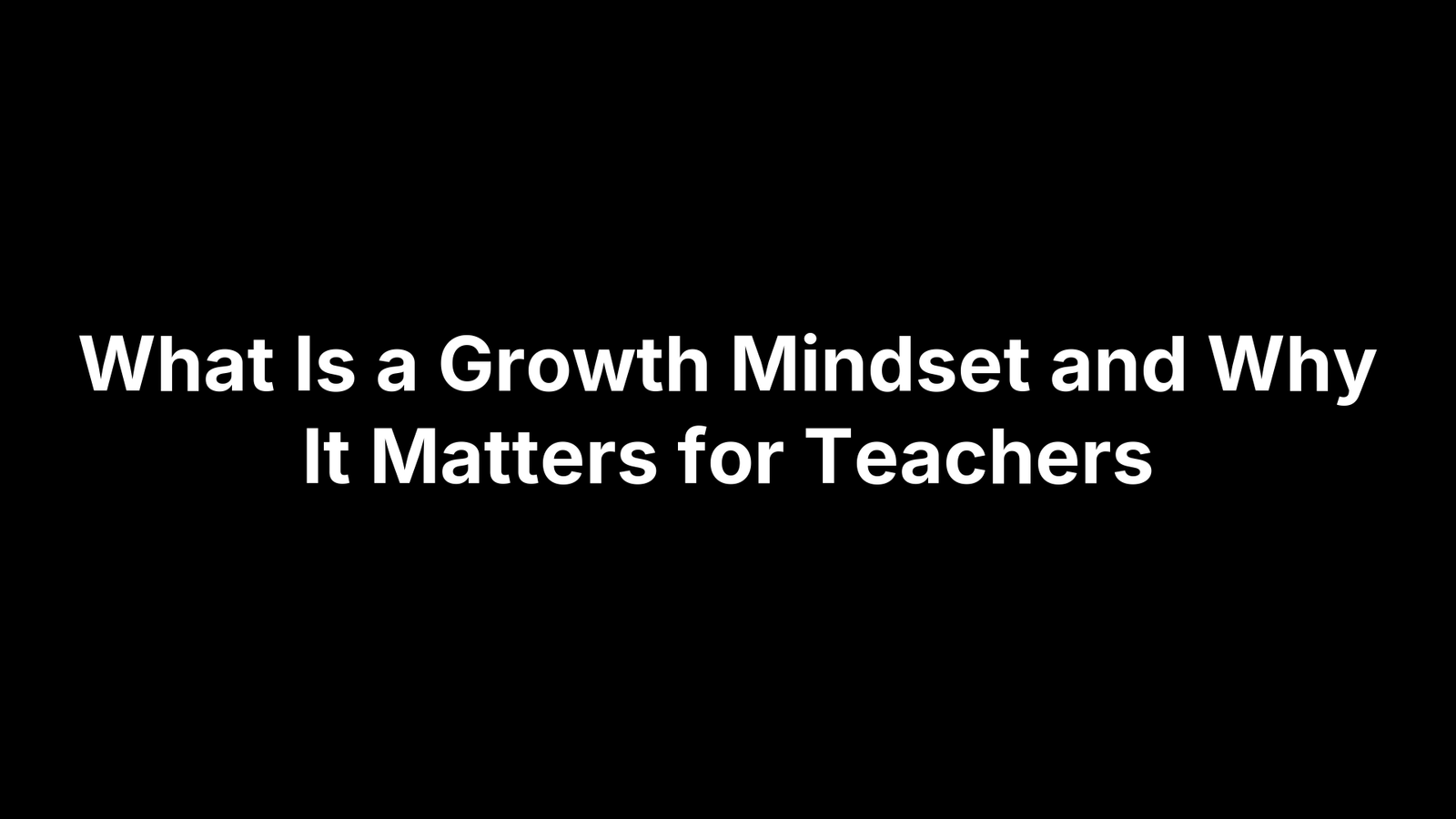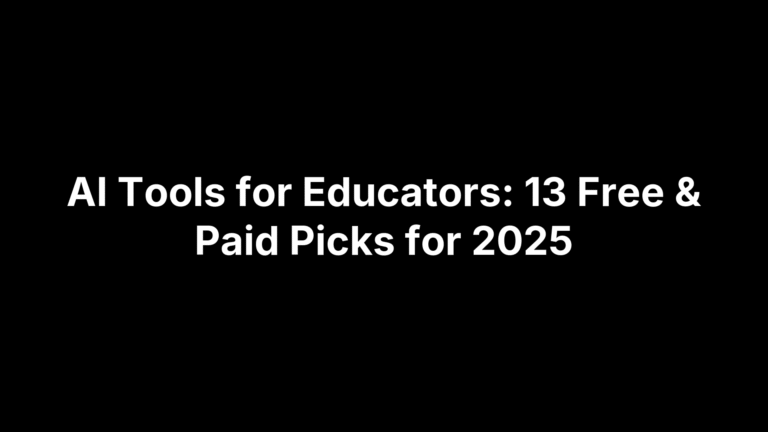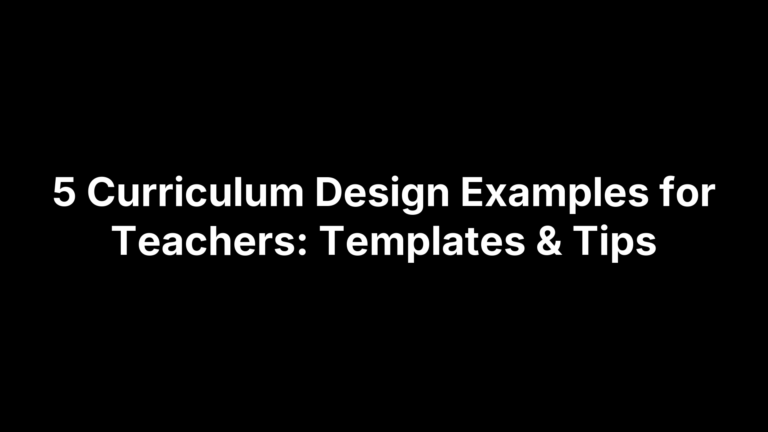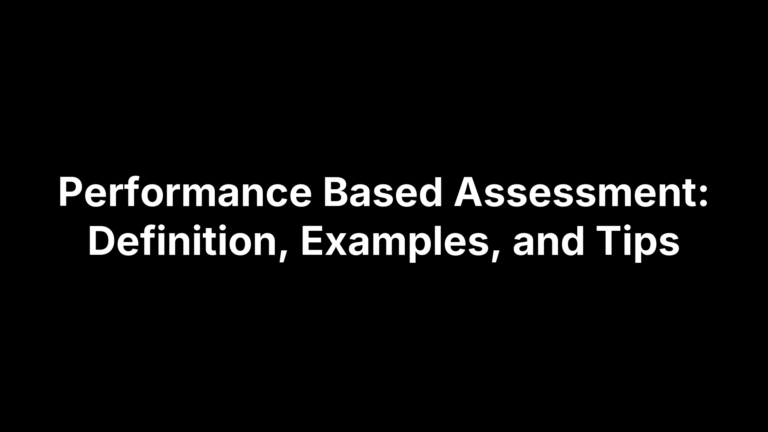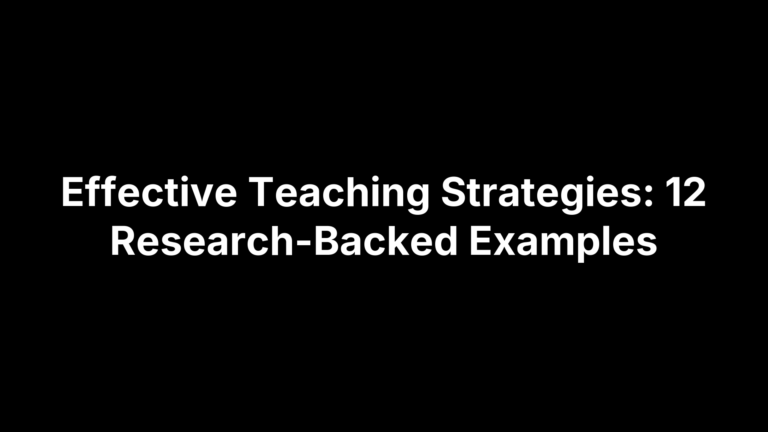What Is Growth Mindset and How Do We Teach It?
Picture a student who bombs a quiz and still reaches for the pencil to try again. That ten-minute decision captures the heart of a growth mindset: the conviction that intelligence and talent can be stretched through effort, smart strategies, and feedback—a core idea first demonstrated by psychologist Carol Dweck.
For teachers, this belief is more than motivational talk; it shapes every choice we make, from how we grade to the words we choose when a lab experiment fizzles. Embrace it and challenges turn into teachable moments, not report-card liabilities. In the pages ahead you’ll get a crisp definition, a side-by-side look at fixed thinking, the latest research findings, and classroom-ready techniques to nurture growth in yourself and your students. We’ll also flag common missteps—like confusing raw effort with effective effort—so your mindset messages ring true.
Growth Mindset Defined: A Teacher-Friendly Overview
Teachers hear the term everywhere, but pinning down a working definition helps translate theory into practice. Here’s the cheat-sheet you can share with colleagues—and your students.
Origin of the Term (Carol Dweck’s Work)
Stanford psychologist Carol Dweck coined “growth mindset” in 1990s studies showing that students who believed intelligence could grow outperformed peers who saw it as fixed. Her book Mindset carried the finding into classrooms worldwide.
Simple Definition Teachers Can Share with Students
Growth mindset: the belief that ability expands through effort, effective strategies, and help from others—like strengthening a muscle by exercising it. The three pillars are
- Effort
- Strategy
- Support.
Five Core Characteristics of a Growth Mindset
- Embrace challenges – Maya opts for the harder reading level.
- Persist after setbacks – Liam revises his lab report twice.
- Value effective effort – Keiko tests new note-taking methods.
- Learn from feedback – Omar uses rubric comments to tweak his essay.
- Celebrate others’ success – Sofia asks the top scorer for study tips.
Fixed Mindset vs. Growth Mindset: Understanding the Contrast
Before we jump into strategies, it helps to see how a fixed mindset differs from a growth mindset in real time. The contrast shapes everything from lesson design to hallway conversations, so a quick side-by-side check keeps our language—and expectations—on track.
Beliefs About Intelligence and Ability
- Fixed mindset: intelligence is a birthright—“you have it or you don’t.”
- Growth mindset: intellect is elastic and can stretch with practice.
For gifted learners, a fixed label can fuel perfectionism and risk-avoidance. Struggling students, meanwhile, may decide extra work is pointless. Reframing both groups around getting smarter opens the door to productive struggle.
Responses to Challenges, Effort, and Feedback
| Classroom Moment | Fixed Response | Growth Response |
|---|---|---|
| Tough math problem | “I’m just bad at math.” | “What strategy haven’t I tried yet?” |
| Teacher critique | Feels judged, tunes out | Mines comments for next steps |
| Peer success | Gets jealous, gives up | Asks, “What can I learn?” |
Classroom Examples Highlighting the Differences
- After a low quiz score, Ms. Ruiz says, “Not yet—let’s revisit your approach,” prompting revisions (growth).
- In a group project, Mr. Hall tells high achievers, “You’re naturals,” and they coast, while others withdraw (fixed).
Even small wording shifts steer students toward curiosity over avoidance.
Evidence Base: What Research Reveals About Mindset and Learning
Skeptical colleagues often ask, “Does believing you can improve actually move the achievement needle?” The short answer is yes—though the gains are modest and context-dependent. From brain scans to nationwide RCTs, the research around what is growth mindset supplies teachers with more than motivational posters.
Neuroplasticity and Brain-Science Foundations
Repeated practice strengthens synaptic connections and increases myelination, making neural pathways faster and more reliable. Functional MRI studies show that students who view mistakes as learning cues activate the anterior cingulate cortex (error-monitoring) and then the prefrontal cortex (strategy selection) more robustly than fixed-mindset peers. In plain English: when kids think effort pays off, their brains literally build better circuits.
Key Studies on Academic Performance and Motivation
- 2019 National Study (≈12,000 ninth-graders, double-blind design): a 50-minute online mindset lesson raised GPA by 0.10 points overall and boosted advanced-course enrollment for low-SES students.
- Meta-analysis of 43 interventions (2022): average effect size
g = 0.14for achievement andg = 0.19for motivation—small but statistically reliable, especially in math and science. - Classroom-embedded experiments consistently link growth-oriented feedback to increased revision rates and homework completion.
Limitations and Nuances Teachers Should Know
Mindset is a catalyst, not a cure-all. Benefits taper when instruction is low quality, when students face chronic resource gaps, or when “try harder” messages ignore strategy. Overhyping results can backfire, leading students to blame themselves instead of seeking support. Pair mindset teaching with solid pedagogy, culturally responsive practices, and tangible scaffolds.
Why Growth Mindset Matters for Teachers Specifically
Teaching is both craft and marathon. Believing that abilities can grow doesn’t just help students—it reshapes a teacher’s daily choices, language, and stamina. Here’s why a growth mindset pays dividends for instruction, expectations, and professional wellbeing.
Impact on Instructional Strategies and Student Outcomes
When you assume every learner can improve, you build in formative checkpoints, offer revision cycles, and weight grades for mastery. These moves raise engagement, narrow achievement gaps, and nudge students toward productive risk-taking instead of point-chasing.
Teacher Expectations and Stereotype Threat
A single comment like “You’re a natural” can lock students into fragile fixed labels, especially those from marginalized groups. Swapping it for process-focused praise sets high expectations, reduces stereotype threat, and shows that effective effort drives success.
Professional Resilience and Burnout Prevention
Viewing your own skills as improvable reframes tech glitches, behavior hiccups, and policy shifts as iterations, not indictments. That perspective correlates with higher job satisfaction, lower attrition intentions, and a stronger appetite for collegial feedback.
Strategies to Foster Growth Mindset in the Classroom
Mindset work sticks only when it shows up in daily routines, not just on a poster. The ideas below translate theory into habits students feel period after period.
Language Shifts: From Praise to Process
Swap talent talk for strategy talk.
- Person-praise ➜ Process-praise: instead of “You’re a math whiz,” try “Your
number-linesketch clarified the fraction.” - Failure ➜ “Not yet”: “That hypothesis isn’t supported yet—what variable can you tweak?”
- Model mistakes: “I mis-aligned the graph; watch how I fix it.”
Classroom Practices: Goal-Setting, Reflection, and Error Analysis
- Weekly SMART goal slips stay clipped to notebooks.
- Exit tickets ask, “What challenge stretched you today?”
- Run a “favorite mistake” spotlight where students explain an error, the fix, and the takeaway.
These quick routines normalize struggle and teach metacognition.
Embedding Growth Mindset in Curriculum and Assessment
- Mastery-based grading: allow resubmissions until a standard is met.
- Rubrics include a “perseverance evidence” row worth 10 %.
- Project cycles build in “draft → peer feedback → iterate” checkpoints, mirroring professional workflows.
Sample Lesson Ideas and Activities
- Brain Builders Warm-Up: 5-minute puzzles that gradually increase in difficulty.
- Math Gallery Walk: groups analyze anonymously posted wrong solutions and annotate corrective steps.
- ELA “Draft Ladder”: students color-code revisions (add, cut, move, clarify) to visualize growth.
- Science Reflection Log: after labs, students list one stumbling block and the strategy that overcame it.
Each activity embeds the message that effort + strategy + help = learning gains.
Modeling and Developing Your Own Growth Mindset as an Educator
Students won’t buy a message their teacher doesn’t live. If you want your class to believe ability can stretch, start by showing how you stretch your own. Think of this section as the teacher-edition answer to “what is growth mindset?”—less theory, more day-to-day habits.
Reflective Practice and Continuous Learning
Reserve ten minutes a week to watch a lesson clip or skim exit tickets, then jot answers to three prompts:
- What worked?
- Where did I stall?
- Which micro-adjustment will I test next?
Over time these quick reflections create a visible through-line of progress and keep self-critique constructive rather than punitive.
Seeking Feedback and Collaborative Inquiry
Invite a colleague to run a “paired observation” cycle: each of you visits the other’s class, shares one glow and one grow, and sets a two-week action goal. Student surveys and instructional coaches add extra lenses, but peer dialogue keeps the process low-stakes and iterative.
Using Technology and AI Tools for Professional Growth
Treat ed-tech like a sandbox, not a verdict. Experiment with The Cautiously Optimistic Teacher’s AI Worksheet Maker to generate alternative problem sets, or feed lesson objectives into a question generator for fresh formative checks. Each low-risk trial signals to students that learning accelerates when we mix effort with smart tools.
Common Misconceptions and Implementation Pitfalls
Even with the best intentions, growth-mindset work can fizzle when myths creep into professional chatter. Below are three traps that trip up workshops and faculty meetings.
“Growth Mindset Lite”: Overusing the Phrase Without Practice
Hanging posters and sprinkling “yet” into sentences changes little if grading, grouping, and feedback still reward speed over struggle. Embed mindset in planning, assessments, and your own modeling.
Confusing Effort with Achievement
Effort matters, but only when paired with thoughtful strategy and reflection. Praise students for testing a new outline or debugging code, not simply for “working hard all night.”
Ignoring Systemic Barriers and Equity Considerations
Mindset does not erase overcrowded classes, language gaps, or bias. Instead, it motivates us to offer scaffolds, culturally responsive examples, and resources so every learner sees a path to growth.
Quick Answers to Frequently Asked Teacher Questions
Pressed for time? The bite-size answers below tackle the questions teachers Google most often about what is growth mindset in practice.
“How do I explain growth mindset to parents?”
Share this three-sentence script: “Brains grow with practice. Mistakes show what to practice next. Partner with me by praising effort and strategy at home.” Drop it into open-house slides or emails.
“Can growth mindset backfire with high-achieving students?”
Yes—if success is framed as innate. Reassure high flyers that deeper questioning, peer tutoring, and risk-taking stretch their brains just as much as getting an A.
“How long does it take to see results?”
Expect early mindset signals—more hands raised, fewer “I can’t” comments—within weeks. Measurable gains on quizzes or projects usually surface after one or two full units.
Moving Forward with a Growth Mindset
By now, you’ve got the essentials: a growth mindset means intelligence can expand; it contrasts with fixed views; neuroscience and large-scale studies back it up; and your words, tasks, and grading policies either reinforce or erode it. You also have a toolbox—process praise, goal-setting, mastery cycles, and self-reflection—to turn belief into daily practice.
Pick one idea, pilot it tomorrow, and track the ripple. When you and your students see progress, add another layer. For more classroom-ready templates, AI helpers, and research briefs, browse The Cautiously Optimistic Teacher and keep stretching right alongside your learners.
